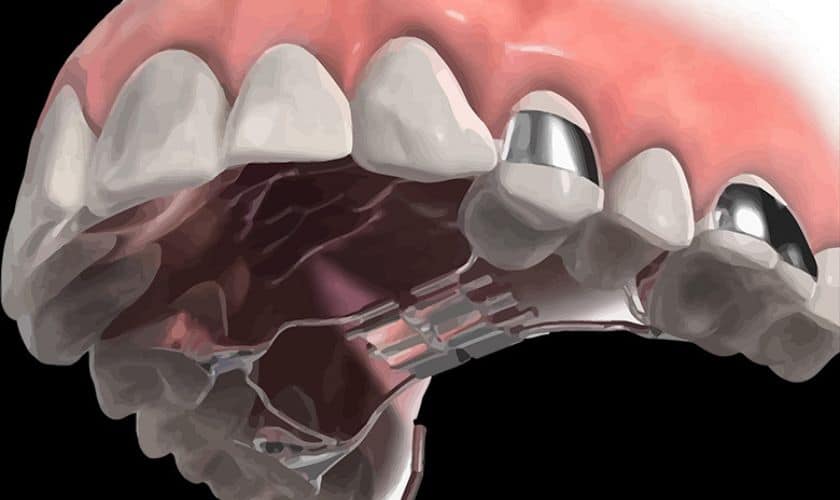In the ever-evolving field of orthodontics, a wide range of tools and techniques are utilized to ensure that each patient’s smile is a masterpiece. One such marvel is the palate expander, a device that plays a pivotal role in resolving dental issues and creating perfect smiles. This article aims to demystify palate expanders, often known as “palate expanders,” and explore how they are instrumental in orthodontic treatments. Additionally, we will discuss the occurrence of loose gum flaps between teeth and the strategies for addressing them.
Understanding Palate Expanders
A palate expander, or palatal expander, is a dental device designed to widen the upper jaw’s arch. This orthodontic tool is employed to address various dental issues such as overcrowded teeth, crossbites, underbites, and other structural anomalies. Palate expanders are typically prescribed for children and adolescents, as their jaws are still in the growth stage, making them more receptive to orthodontic correction. However, they can also be used for adults under specific circumstances.
How a Palate Expander Works
The functionality of a palate expander is rooted in orthodontic principles. Let’s break down the process step by step:
- Evaluation and Customization: The journey begins with a thorough assessment by an experienced orthodontist. X-rays, dental impressions, and a clinical examination are performed to gauge the individual’s dental structure. Based on this evaluation, a customized treatment plan is devised, which may include the use of a palate expander.
- Placement of the Expander: Palate expanders come in two primary forms: fixed and removable. In the case of a fixed expander, it is bonded to the upper molars using bands or dental cement. The centerpiece of the expander is an adjustable screw mechanism.
- Activation: The magic of the palate expander lies in its adjustable screw. To initiate the expansion process, the orthodontist instructs the patient or their guardian to use a special key to turn the screw at specified intervals. This turning imparts pressure to the palatal bones, facilitating gradual separation.
- Palate Widening: As the screw is turned, the palate gradually widens, creating space within the upper jaw. This expansion is typically spread over several weeks or months, with the number of turns varying from one individual to another.
- Monitoring Progress: Regular appointments with the orthodontist are crucial to monitor the progress of palate expansion and ensure that the desired results are being achieved without causing discomfort or complications.
Benefits of Palate Expanders
Palate expanders offer a multitude of benefits for individuals grappling with dental issues, including:
- Improved Dental Alignment: Palate expanders are highly effective in correcting improper bite alignment, whether it’s an overbite, underbite, or crossbite. By widening the palate, they create the necessary space for teeth to align properly.
- Enhanced Aesthetics: Overcoming dental crowding issues significantly enhances the visual appeal of one’s smile, boosting self-esteem and confidence.
- Better Breathing and Speech: In cases where dental overcrowding affects airways or speech, palate expanders can lead to improved breathing and clearer speech.
- Reduced Need for Extractions: The expansion of the palate often eliminates the requirement for dental extractions, preserving natural teeth.
- Long-Term Dental Health: Well-aligned teeth are easier to clean and maintain, thus reducing the risk of dental problems such as cavities and gum disease.
Addressing Loose Gum Flaps Between Teeth
In some cases, individuals might experience the presence of loose gum flap between teeth. This condition, known as gingival recession or gum recession, can be a result of various factors, including gum disease, aggressive brushing, or poor dental hygiene. To address loose gum flaps between teeth:
- Consult a Dentist: The first step is to seek professional guidance from a dentist or periodontist. They can assess the severity of the gum recession and recommend the appropriate treatment.
- Scaling and Root Planing: In mild cases of gum recession, a non-surgical approach called scaling and root planing may be recommended. This procedure involves removing plaque and tartar from the tooth and root surfaces and smoothing the roots to encourage the gums to reattach.
- Gum Grafting: In more severe cases, gum grafting may be necessary. This surgical procedure involves taking tissue from another part of the mouth or using donor tissue to cover the exposed root and promote gum tissue regeneration.
- Lifestyle Adjustments: Maintaining good oral hygiene practices, using a soft-bristle toothbrush, and avoiding aggressive brushing can help prevent further gum recession.
Conclusion:
Palate expanders, commonly known as palate expanders, are remarkable orthodontic tools that facilitate the resolution of various dental issues, enhancing oral health and aesthetics. Whether it’s children or adults, palate expanders play a vital role in crafting smiles that radiate confidence. Moreover, for individuals dealing with loose gum flaps between their teeth, there are effective treatments available to address the issue and promote healthier gums. If you or a loved one is facing dental concerns, don’t hesitate to consult an orthodontist or dentist for professional guidance and embark on a journey to a healthier, happier smile.












